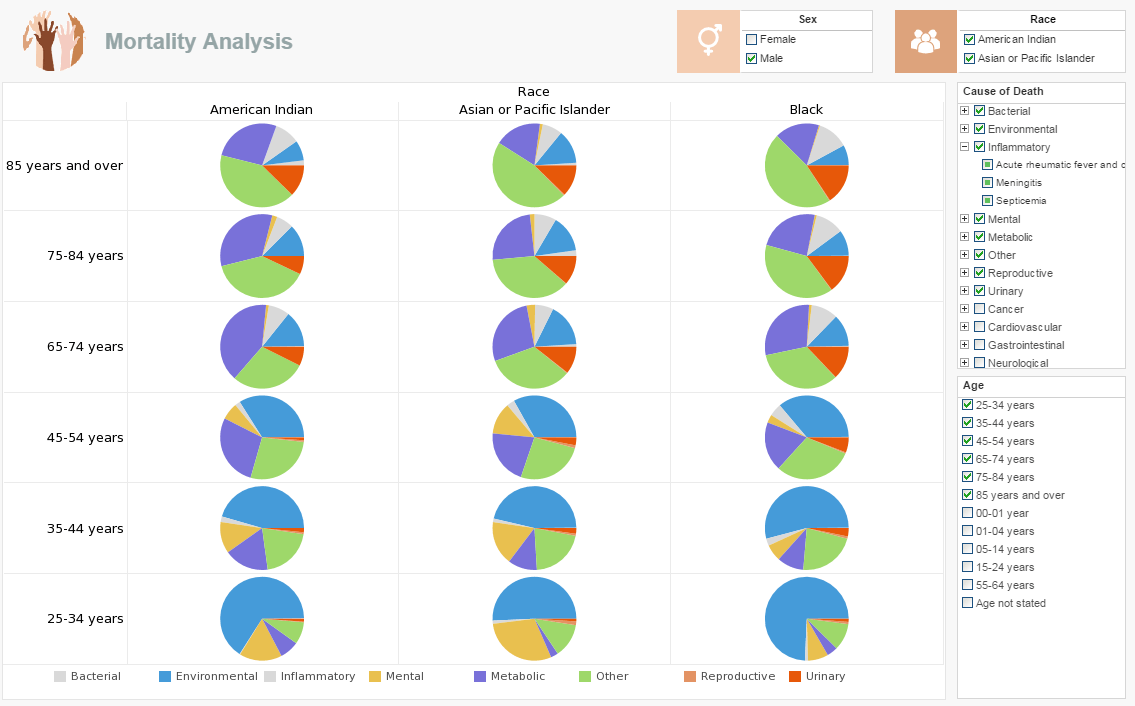InetSoft Webinar: Healthcare Data Analytics Examples
Below is the continuation of the transcript of a Webinar hosted by InetSoft in May 2018 on the topic of Healthcare Machine Learning Analytics. The presenter is Abhishek Gupta, Product Manager at InetSoft, and the guest is Jim Reynolds, CTO at Health Analytica.
Abhishek: How about an example of data science applied to healthcare? Do we have an opportunity to look to beyond the technology into an actual use case? You probably can't name them, but where and how is this being used, and what are the paybacks?
Jim: So, we work in large, whether that'd be private or public, and we will deal with something in the size of a Medicaid program for a state. So when you imagine the population of a state and the number of people involved in a healthcare program of that size, we have to analyze the entire program and all the claims and recipients and providers in that healthcare program. So that data is really large.
Abhishek: So provide an example perhaps as to what was the case before and then after applying your data science solution to the problem.
Jim: So the biggest challenge that most of them face is which I alluded to earlier is that they don't need to go out and figure out in this big data set of claims what do I have to do today to actually help solve the problem of doing recruitments or teaching people how to bill more properly, or getting rid of waste or abuse, or asking for money back, or changing policy so that people stop paying for things that shouldn't be paid for.
| #1 Ranking: Read how InetSoft was rated #1 for user adoption in G2's user survey-based index | Read More |
So with our data science analytics solution what most people do is go in and look at the efficacy of how procedure curves are being paid for in healthcare, and they can formulate better policy by looking at how much is being spent on a series of procedures, and they can say, oh I don't need to do these procedures in a row. If we just change the way that people are utilizing the healthcare system, they can get the same outcome and reduce the cost.
Another example is where we know there's fraudulent behavior that most of the healthcare claims processing can't find because the complexity is too high. We can zero in on these behaviors and then immediately flag them up for them and say, look we have services here that shouldn't be happening, and so those are the things that they can take immediate action on, and then that gives them the ability to in a very low cost and a rapid fashion continue to preserve the overall integrity of the program.
Abhishek: Okay, so that's really sets us up for the next stage in the evolution of this value. Clearly a lot of necessity around fraud detection will necessitate inclusion of more data which will then give you opportunity to analyze it in different way such what are the best procedures population surveys and statistics. Is that something that you're already seeing, or is that something that you're holding out for? Where do we go beyond fraud detection when it comes to using this data productively?
Jim: Well the two really large sources, and let me wax just slightly philosophically first, I think the two really large sources of data are electronic health records and claims. And either one of those two sources of data will let you really peek inside of healthcare, and there's a huge national effort to really exploit the value of this data to help improve outcomes in the large, but overall when you look at claims, these are services that are actually happening.
It allows you to look at the program as a whole, and over time you're going to be able to start to see whether or not policy changes are actually helping people. Take for example, chronic conditions. Chronic conditions actually account for a substantial amount of healthcare cost, and a 10% change in a chronic condition can save a lot of money.
Learn how InetSoft supercharges BI with Spark to make machine learning easy. |
But not only that it can improve the outcomes of people's health and so as we -- as you think about the technology be able to peal inside of healthcare claims and make sense of things and measure things in a meaningful ways. There's really an open field for other ways that you could leverage this type of technology to help people make better decisions and do it in ways that were never possible before because we can just look at so much more data all at once and do it so quickly that people can actually make decisions in a meaningful way and in a timely way.
For certain problems time really does matter, and if somebody has a three month window for their health to deteriorate rapidly, you can't wait a year to go address that problem. So getting this stuff available to people in a timely and quick fashion with high quality will continue to be the challenge, and this is where this technology can go.
| Previous: Compress the Time Between Analytics Question and Answer |



